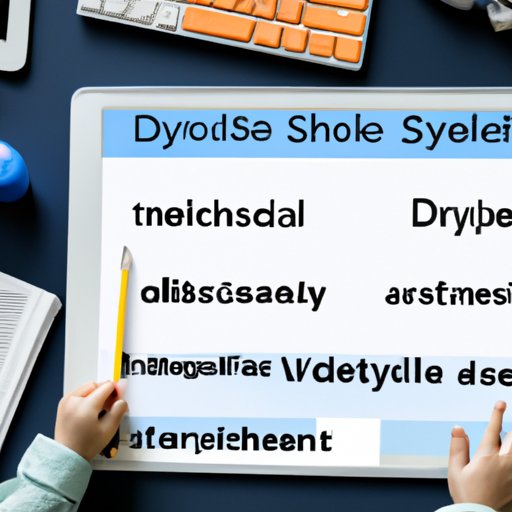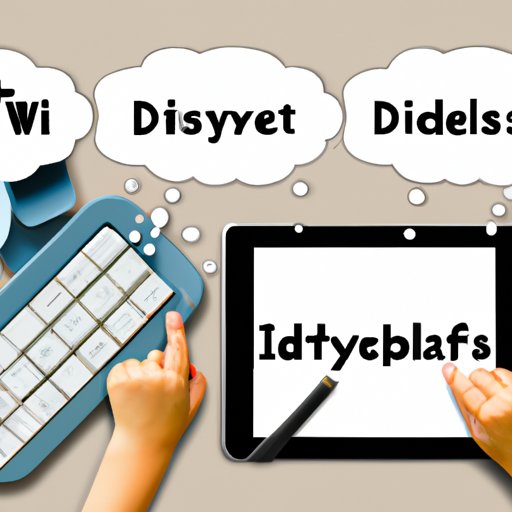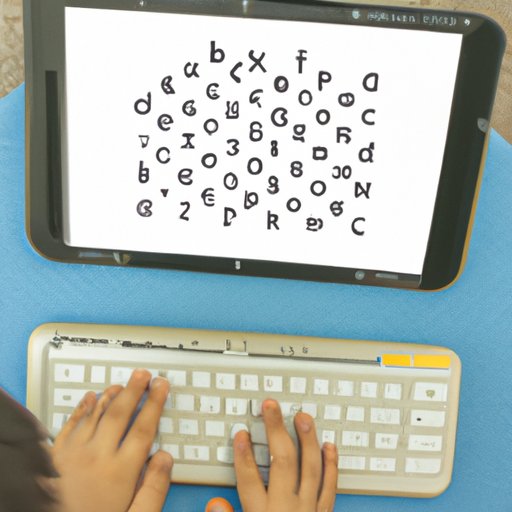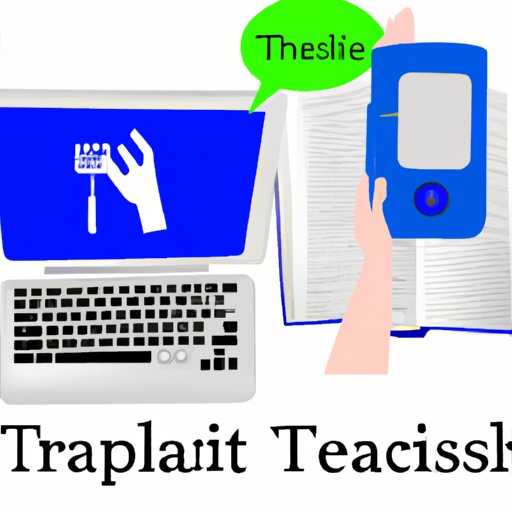Introduction
Assistive technology has become an increasingly important tool in helping people with dyslexia access information and education more easily. Assistive technology is defined as any item, piece of equipment, or product system that is used to increase, maintain, or improve functional capabilities of individuals with disabilities. It can be applied to many different areas of life, such as communication, physical activities, and learning.
This article will explore the various types of assistive technology available for people with dyslexia, the benefits they can provide, and tips for implementing them. Additionally, it will discuss how to choose the right assistive technology for a particular individual and present case studies of people who have successfully used assistive technology to support their dyslexia.

Overview of Assistive Technology for Dyslexia
Dyslexia is a specific learning disability that is neurological in origin. It is characterized by difficulties with accurate and/or fluent word recognition, spelling, and decoding abilities. People with dyslexia often have difficulty reading and writing, which can be a significant obstacle in school and other educational settings.
Assistive technology can help to reduce some of these obstacles by providing tools that can make it easier for people with dyslexia to access information. Assistive technology for dyslexia includes a variety of tools, such as speech-to-text software, text-to-speech software, word prediction software, audio books, and resource libraries.
Types of Assistive Technology for Dyslexia
Speech-to-text software is designed to convert spoken words into text on a computer screen. This type of software can be helpful for people with dyslexia who struggle with reading and writing, as it allows them to express themselves without having to worry about spelling or grammar. Examples of speech-to-text software include Dragon Naturally Speaking and Windows Speech Recognition.
Text-to-speech software is designed to convert text on a computer screen into spoken words. This type of software can be helpful for people with dyslexia who struggle with reading, as it allows them to hear the words rather than having to read them. Examples of text-to-speech software include Read&Write Gold and NaturalReader.
Word prediction software is designed to predict the next word a person is going to type based on the words they have already typed. This type of software can be helpful for people with dyslexia who struggle with spelling, as it can provide suggestions for the correct spelling of a word. Examples of word prediction software include Co:Writer and WordQ.
Audio books are recordings of books being read aloud. This type of technology can be helpful for people with dyslexia who struggle with reading, as it allows them to listen to the book instead of having to read it. Audio books can be found in a variety of formats, including CDs, MP3s, and online streaming services.
Resource libraries are collections of materials, such as books, websites, and videos, that are specifically designed to help people with dyslexia. These libraries can be helpful for people with dyslexia who are looking for resources to help them better understand and manage their condition.
Benefits of Assistive Technology for Dyslexia
There are many benefits to using assistive technology for dyslexia. One of the most significant benefits is improved reading comprehension. Studies have shown that using assistive technology can help people with dyslexia better understand what they are reading and recall information more easily.
Another benefit of using assistive technology for dyslexia is increased confidence. People with dyslexia often feel frustrated and discouraged due to their struggles with reading and writing. Assistive technology can help to reduce these feelings by providing tools that can make it easier for them to access information and express themselves.
Finally, assistive technology can provide easier access to information. People with dyslexia often find it difficult to access information due to their reading and writing difficulties. Assistive technology can help to bridge this gap by providing tools that can make it easier for them to access and understand information.

How to Choose the Right Assistive Technology for Dyslexia
When choosing assistive technology for dyslexia, it is important to take into account the individual’s needs and preferences. The first step is to identify the individual’s needs. For example, if the individual is struggling with reading, then text-to-speech software may be the best option. If they are struggling with spelling, then word prediction software may be the best option.
Once the individual’s needs have been identified, it is important to research the available options. There are a variety of different assistive technologies available, and it is important to find the one that is best suited to the individual’s needs. It is also important to talk to a professional, such as a speech-language pathologist or special education teacher, to get advice on which type of assistive technology would be most beneficial.

Case Studies of People Using Assistive Technology for Dyslexia
In order to better understand how assistive technology can be used to support people with dyslexia, it is helpful to look at case studies of people who have successfully implemented it. Below are three case studies of students with dyslexia who have used assistive technology to support their learning.
Student A: Student A is a high school student with severe dyslexia. She began using speech-to-text software to write her essays and found that it significantly reduced the amount of time it took her to complete them. She was also able to produce higher quality essays, as she was able to focus more on the content rather than worrying about spelling and grammar.
Student B: Student B is a college student with mild dyslexia. He began using text-to-speech software to read his textbooks and found that it made it much easier for him to process the material. He was also able to listen to the material while doing other tasks, such as exercising or cooking, which made it easier for him to stay focused and retain the information.
Student C: Student C is an elementary school student with moderate dyslexia. She began using audio books to read stories and found that it made it much easier for her to comprehend the material. She was also able to listen to the stories multiple times, which allowed her to better understand and remember them.
Tips for Implementing Assistive Technology for Dyslexia
Implementing assistive technology for dyslexia can be overwhelming, so it is important to start small and set realistic goals. Start with one type of technology and gradually add more as needed. Additionally, it is important to utilize the various resources available, such as tutorials, webinars, and support groups.
Conclusion
Assistive technology can be a valuable tool for people with dyslexia in accessing information, improving their reading comprehension, and increasing their confidence. This article explored the various types of assistive technology available, the benefits they can provide, and tips for implementing them. Additionally, it discussed how to choose the right assistive technology for a particular individual and presented case studies of people who have successfully used assistive technology to support their dyslexia.
(Note: Is this article not meeting your expectations? Do you have knowledge or insights to share? Unlock new opportunities and expand your reach by joining our authors team. Click Registration to join us and share your expertise with our readers.)
